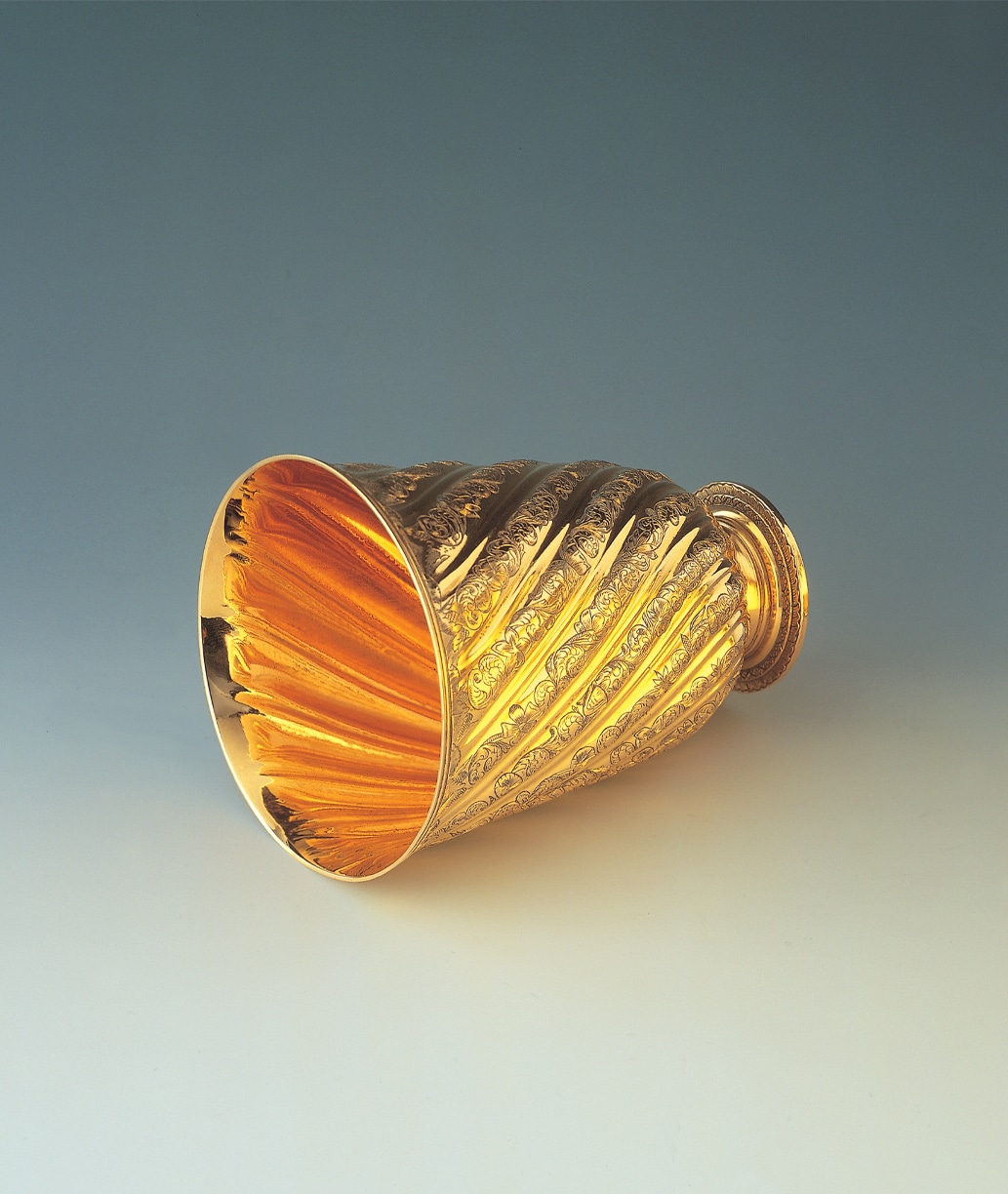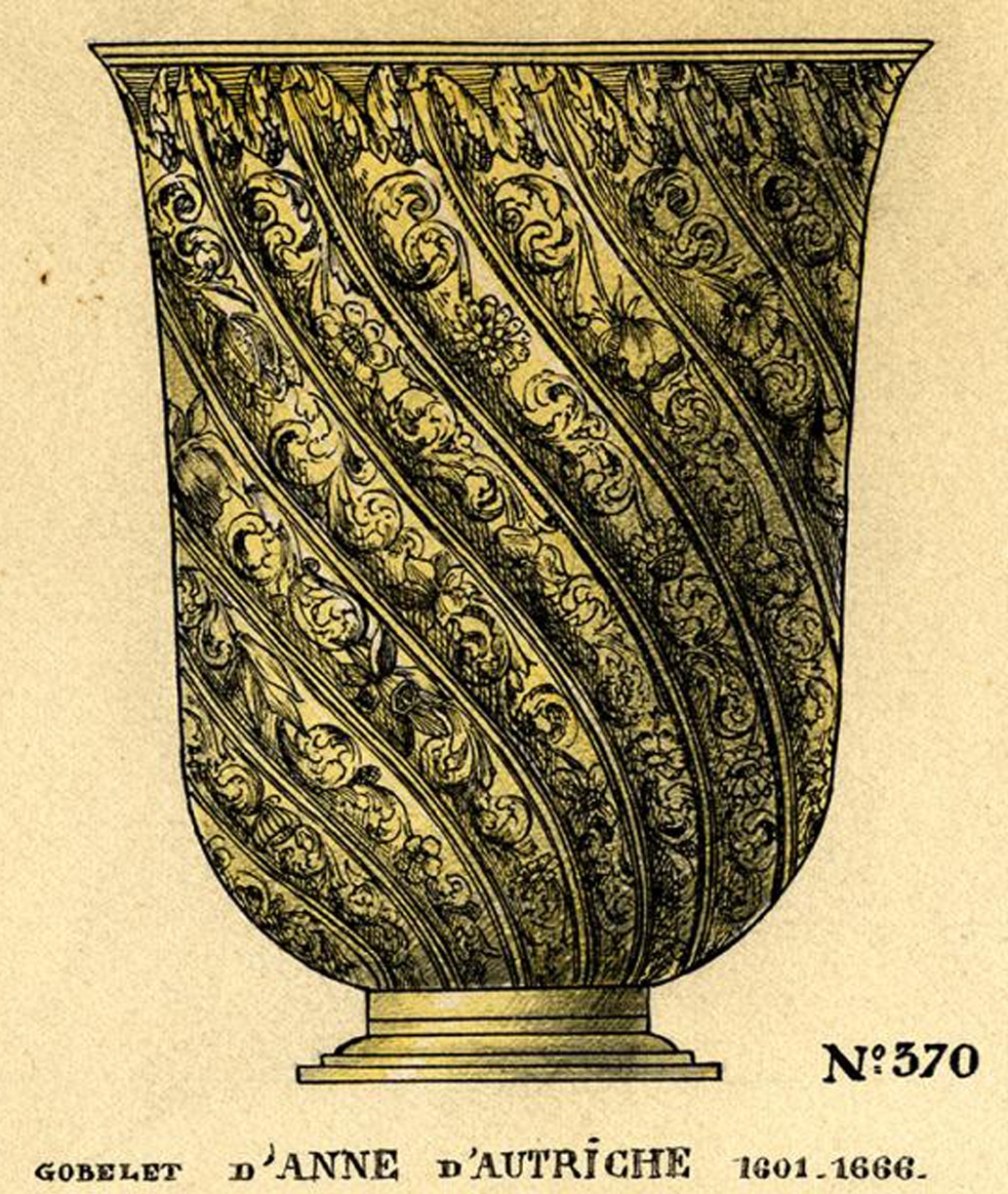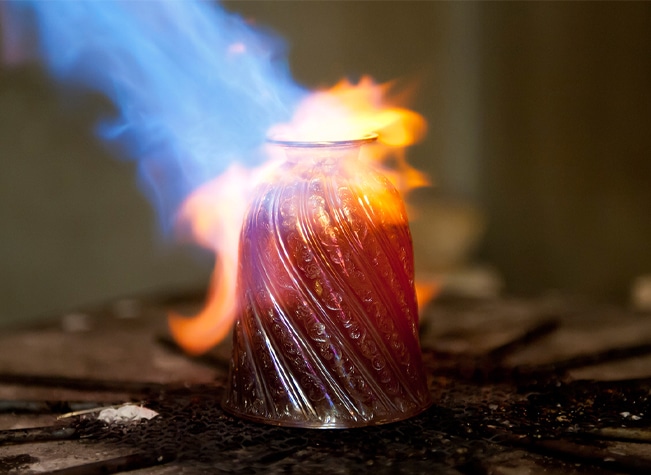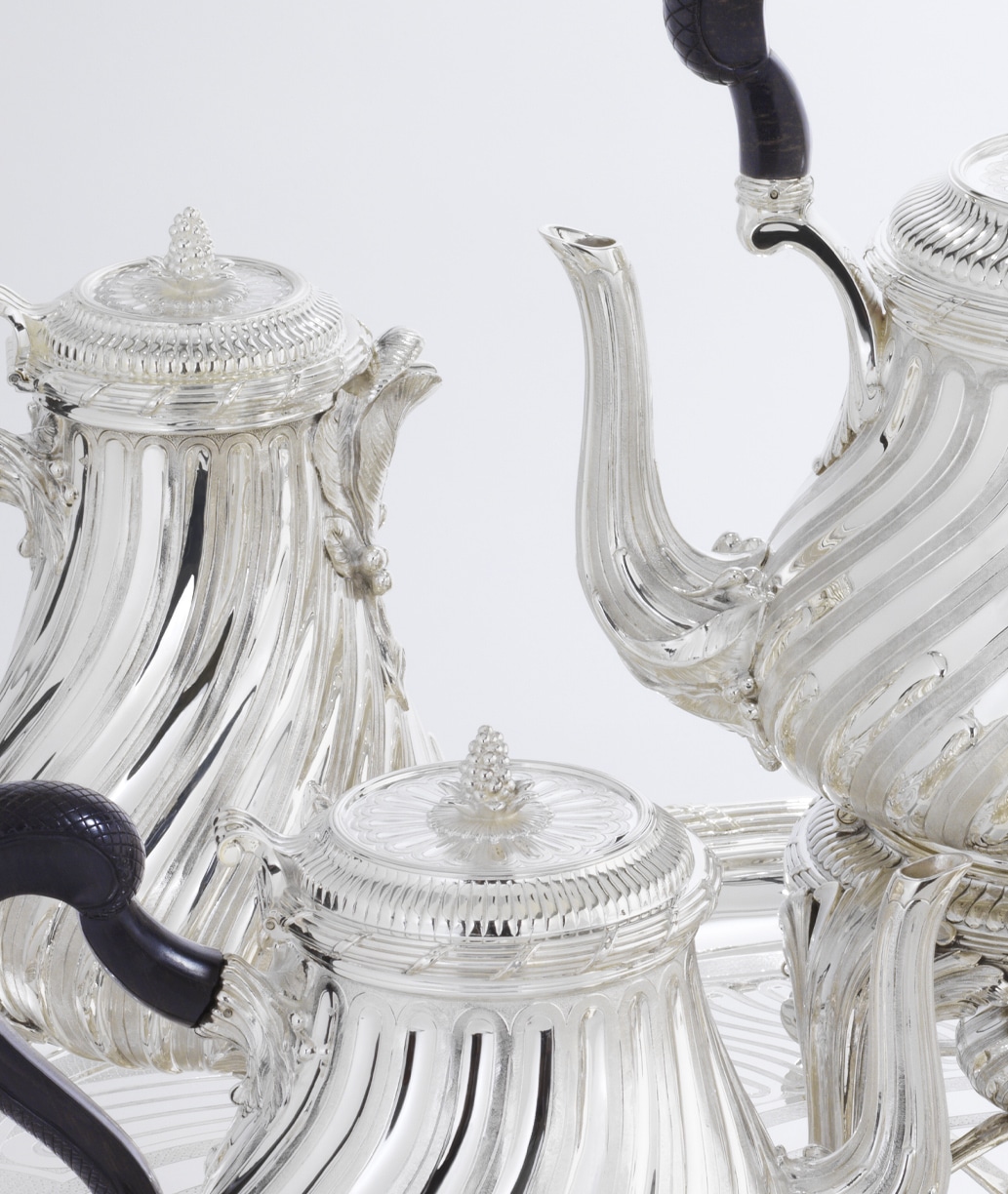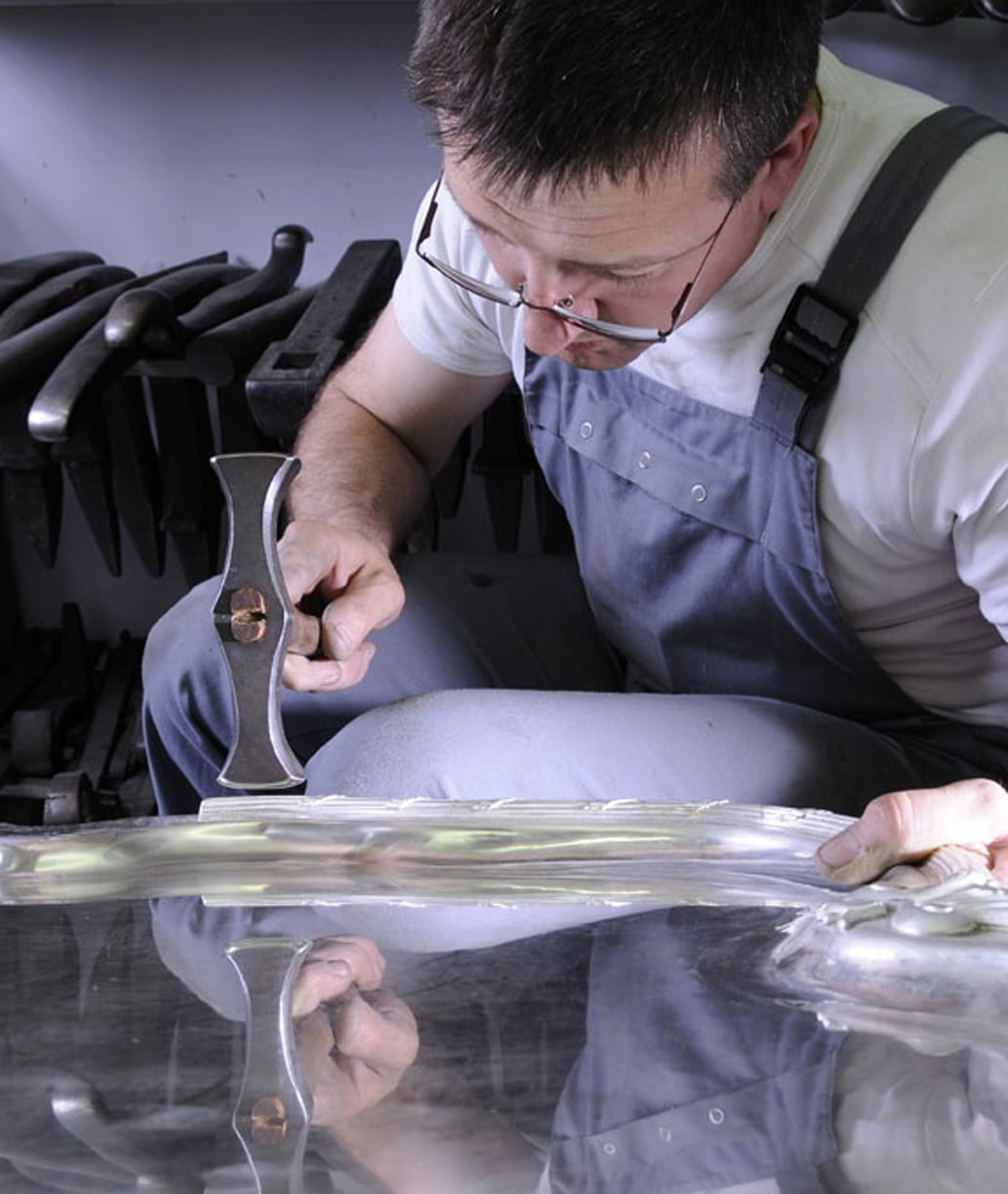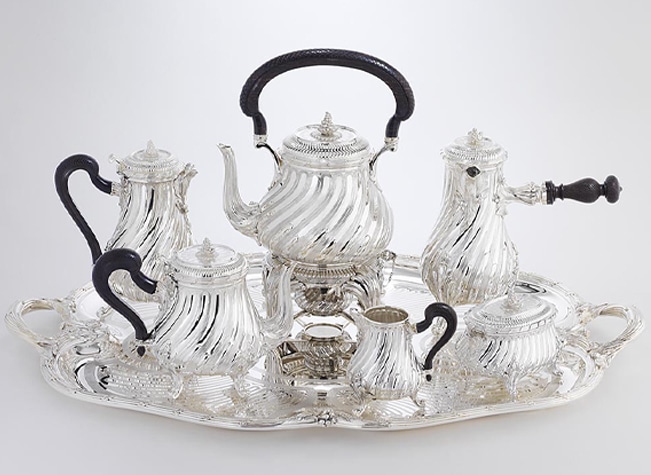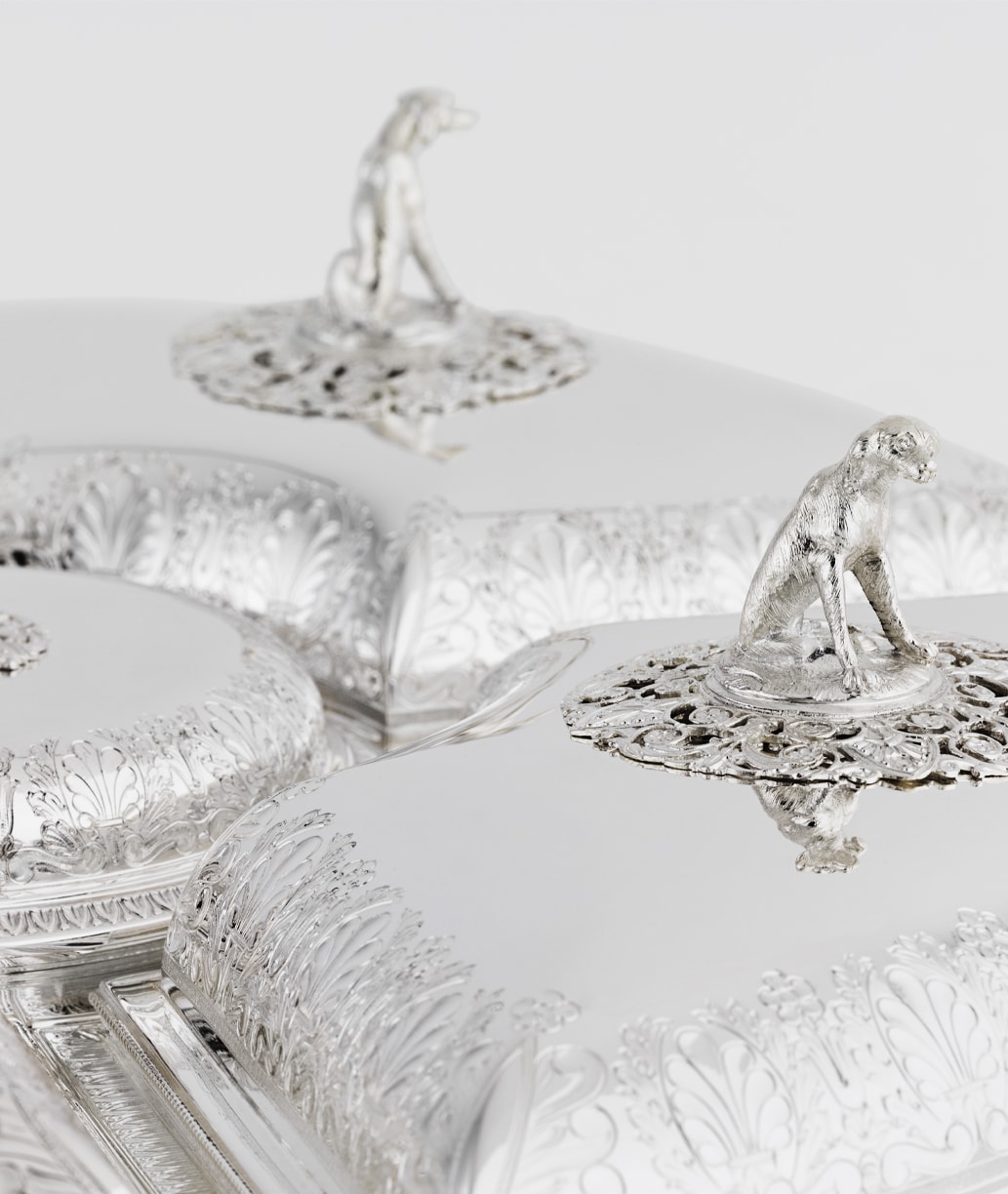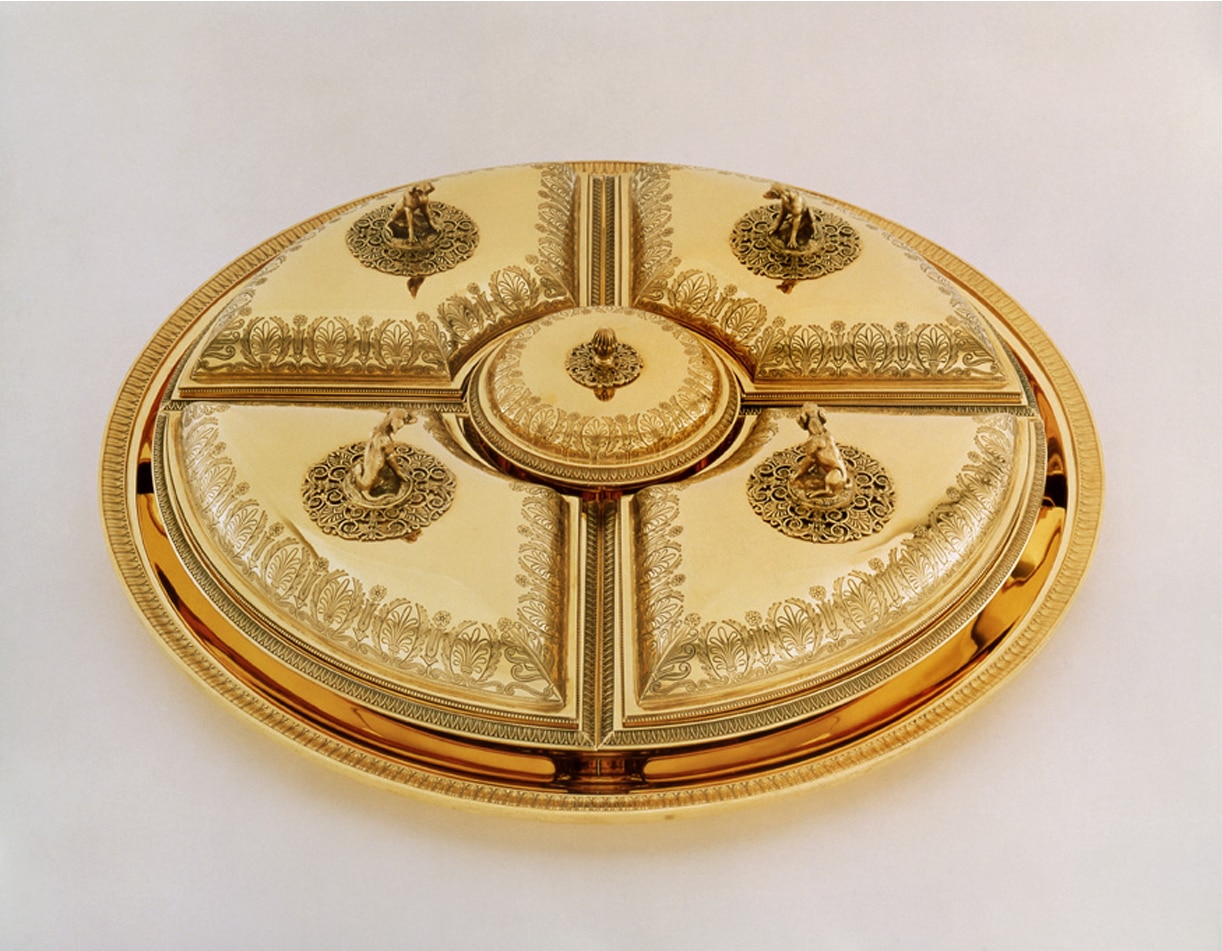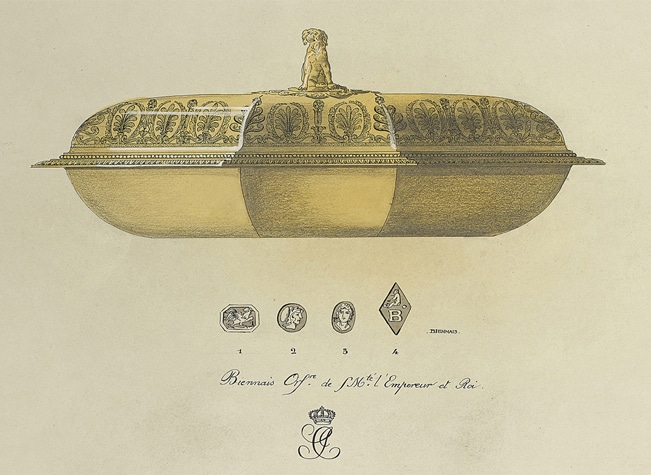Re-edition of prestige pieces
Re-edition of prestige pieces
In his spare time, Louis Victor collected classic pieces of silverwork, later reproducing the finest creations in his workshop. Over the years, he acquired works by 17th and 18th centuries masters including Etienne Lebret, Nicolas Besnier, François Thomas Germain, Martin Guillaume Bennais and others, assembling a unique repertoire of models in the classic style.
Iconic
golden chalice
Iconic
golden chalice
The Anne of Austria tumbler is a masterpiece from the lifelong collection of silverwork assembled by Louis-Victor Puiforcat. It stands out among these precious objects forged for the crowned heads of Europe by the greatest silversmiths of past centuries, applying their remarkable savoir-faire. Queen Anne of Austria, mother of Louis XIV, is said to have presented this solid gold chalice to one of her attendants, Anne Gaboury. We may never know if this tale is apocryphal. Nevertheless, the beaker remains a rare specimen of the golden tableware prized by 16th century monarchs.
Housed today in the Louvre Museum, it continues to inspire the House of Puiforcat, even serving as its emblem – the inspiration for the undulating silhouette featured on the logo derives from the play of light on the voluted furrows of the historic beaker.
A sizeable
masterpiece
A sizeable
masterpiece
This outstanding ensemble is named after the silversmith who made the original coffee pot that inspired the complete set a couple of centuries later. Louis Victor Puiforcat, great collector of ancient silversmith pieces and owner of the coffee pot, asked the artisans in his workshop to duplicate the original piece and challenged them to imagine the other elements to form a complete set (tea pot, coffee pot, sugar bowl, etc.). He will baptize the set the “François Thomas Germain set” to pay tribute to the famous French silversmith.
The original piece made in 1755 by François Thomas Germain was sold to a private collection. There is a very close model on display at the Metropolitan Museum of Art in New York.
The reproduction of the service by the Puiforcat workshop requires 2500 hours of work, 90 of which are devoted exclusively to the leveling of the tray by means of hammers and meshes.
The emperor's
"lunch plate"
The emperor's
"lunch plate"
This outstanding set is the exact replica of a piece by Martin Guillaume Biennais, silversmith to the French emperor Napoléon Bonaparte. The circular, flat-bottomed candy dish with four equally sized divisions arranged around a central section was used as a “lunch tray” on the battle fields by the famous French military and political leader. The original piece was eventually offered by Bonaparte to one of his closest marshal, Jean-Baptiste Bernadotte, who eventually became king of Sweden and Norway in 1818.
The gold gilt replica is typical of the imperial taste. The round tray houses four compartments. The dids, ornamented with knurled friezes and chiseled palmettes, conceal the dish’s contents, which may only be revealed by lifting one of the decorative knobs: a hunting dog perched in the center of an embroidered rose-window, or an acorn in the center section.
For any questions or information about our prestige pieces, please contact our customer service on
+33 (0)1 45 63 10 10 or by email at
puiforcat.matignon@puiforcat.com , our team will be happy to help you.
